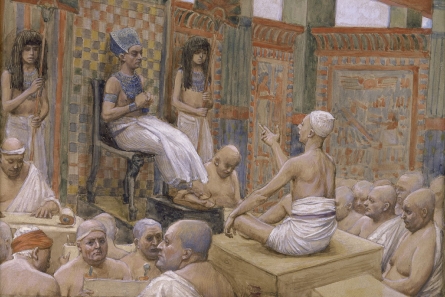Get your fire started!
Have you ever had to deal with fundraising writer’s block? If you’re a fundraising writer or a graphic designer, you’ve had to face the dreaded “empty page.” The blank page is the starting point for all of your creative work, the empty canvas where you will perform your art. But sometimes the blank page stretches out before you like an endless, barren desert. A desolate wasteland where no ideas will ever take root. You start a sentence, only to furrow your brow and delete it.
What is an idea file?
One cure for this kind of writer’s block is an “idea file.” Start to collect the direct mail pieces, newsletters, or thank you notes that you receive from your favorite charities. Make donations to great organizations that you respect so you can start getting their direct mail pieces. When the mail comes in, instead of glancing at it and tossing it into the trash, put it into your idea file. Remember, you PAID for these pieces with your donation.
When you’re facing the blank page and your creative juices have been swallowed by the Sahara, you will have a file of ideas that you can use to prime the pump. Glancing through the file, you’ll see great examples, terrible examples, bland examples. Don’t toss out the worst of the bunch, they’ll serve as object lessons of what you DON’T want to do.
Some elements that you might want scrutinize:
- Carrier – Also known as the envelope, the carrier is the first thing that your donors see. A good carrier can make or break your campaign, because the carrier will have a big impact on whether or not your potential donors even open their mail. You will get zero donations from letters that are tossed into the waste basket without being read.
- Design and layout – You don’t always have to design the letter exactly the same. Sometimes mixing it up can help make a strong impression on your donors. Just remember who your audience is and don’t be artsy for the sake of being artsy. You’re not trying to impress people with your stylish design, your are trying to inspire generosity. Pay closer attention to what the big national organizations are doing than your local rival. The bigger the organization, the more likely they did some testing and had favorable results.
- Stories – You obviously can’t steal the stories from other non-profits, because that would be dishonest. But you can draw inspiration from the kinds of stories they tell and the ways that they tell them. They might spark an idea of where to look for a story, or give you a smart way to structure the story that is effective in inspiring action. Pay close attention to the kinds of emotions that are arising as you read, and how the tone of the letter makes the difference on your desire to donate.
- The “Ask” – The most important part of any direct mail piece is the “Ask.” How are the pieces presenting the ask? What are they saying? Are they using any graphic cues like underlining or boldface fonts to highlight or emphasize the ask? Does it flow well out of the story? How does the piece move a person through an emotional journey to the point of making a donation.
- The response device – The response device and envelope are the vehicle that the donors will use to donate. How does each piece create a seamless transition from the letter to making the gift? Simplicity is the key here, so notice how other organizations are arranging information to make it easy to donate.
You’ll find that your idea file will be quite useful when you need to overcome your writer’s or designer’s block. It gets your wheels turning so you can start them spinning in the right direction.
Again, I want to emphasize that I am NOT recommending plagiarism! If someone gets the same fundraising letter from two different organizations, BOTH of them look terrible. Just use their work to inspire your own and get you out of that rut that has got you trapped.
Flex your creative muscles with free writing.
Another way to overcome fundraising writer’s block is to invest some time in developing your creative muscles. In 2016, I discovered a discipline called “free writing”. For 10 minutes a day, I sit down and write something. I don’t labor over it, I just write whatever comes to mind. It might start with a word that pops into my head. An event from the day might be the seed that gets me started. It doesn’t matter where I start, or where I go. The fact is I just do it.
I’ve done freewriting daily consistently since 2016, and the fruit of it has been wonderful. I write more quickly. I’m able to dive in more easily. My writing has become simpler and easier to understand. Writing is a muscle. If you are writing every day, you’re bound to improve. If you are NOT writing every day, you will likely run into roadblocks.
Challenge yourself to write a new direct mail appeal every day for a week. Don’t labor over them, just crank out whatever comes to mind. Some of them will be terrible… laughably bad. But you might also strike some gold. Remember, this is not about the finished product any more than doing push ups is about doing the perfect push up. Free writing is creative exercise that strengthens your writing muscles so they’ll be strong enough to do heavy lifting on demand.
The other thing free writing does is give you a big storehouse of original material that is ready when you need it. Sometimes a turn of phrase comes out of your mind that is just delightful. You can keep that and even store it somewhere else. I store all of my free writing in Microsoft OneNote, where I can easily search it for an idea or phrase from past exercises.
If you want to get more aggressive with this, you can also do free editing. Go back to some of your earlier free writing exercises, read through them, and try to improve them. Look for the central theme of the exercise and bring it out more clearly. Change word choice. Experiment with words. It’s fun! I’m pretty sure that editing uses a different part of your brain than original composition. Sharpening your editing tool set only makes good sense.
When you trip, keep running.
Sometimes you might hit fundraising writer’s block when you’re in the middle of writing something. A word or a sentence can become a stumbling block that prevents you from finishing what you have started. In some cases, it might be better to toss in a place holder word and move on to the next sentence or paragraph. Pick a word that will jump out at you when you’re editing, so you don’t accidentally leave it in the finished product. One of my favorite bloggers talks about using the word “lobster” when he gets stuck. Hollywood extras will mouth the words “peanut butter watermelon” in crowd scenes when they are supposed to be deep in conversations. It keeps their lips moving so it looks natural.
It doesn’t matter what you use as a place holder. Just keep running. Having more words on the canvas will make a big difference when you come back to replace your placeholder with real content. You might discover that the perfect word or sentence is just sitting and waiting for your return.
Go to the source.
In the beginning was the Word. The best way to avoid fundraising writer’s block is to start with prayer. God is the source of all creativity and all goodness. Ask for His help. Ask for His inspiration. You’ll be surprised what happens when you start all of your creative activities with prayer. And stay focused on why you’re raising money in the first place.
Not that He’ll do all the work for you, although admittedly that does sometimes happen. He wants us to be co-creators with Him in making something new that did not exist before. He wants us to master the gifts of writing and communication that He has given us and use them to do good.
I pray daily that God make me a better writer and a better beggar. He responds by giving me the grace I need to grow in both of these gifts. He’ll do the same for you!
Looking for more articles on direct mail fundraising? Try these:
- How do I raise money with direct mail?
- Can I start a direct mail program?
- Can I get new direct mail donors?
- How do I raise money with direct mail cultivation?
- What is a test mailing?
- How should I use thank you notes in my direct mail fundraising?
- How can my newsletters raise more money?
Check out The Fundraiser’s Playbook for a full list of fundraising articles.
Would you like to learn more about raising money for Church and Ministry? Check out Letters From The Almoner, now available on Amazon.com.
Image courtesy of Sebastien Wiertz, via Creative Commons License, some rights reserved.










